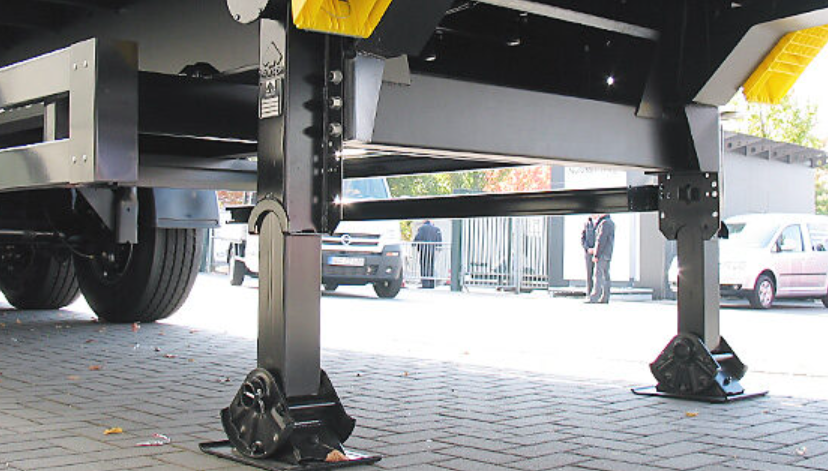What Are Trailer Landing Legs?
Understanding the Role of Trailer Landing Legs
Trailer landing legs are heavy-duty support components mounted at the front of a trailer. Their primary purpose is to stabilise and support the trailer when it is uncoupled from a truck or prime mover. Without them, a disconnected trailer would have no way to stand independently, making them essential for safety during loading, unloading, and storage.
They’re particularly important in freight and logistics operations where trailers are frequently dropped and picked up at depots or customer sites. Landing legs allow trailers to be left in a safe, upright position without risk of tipping or structural damage.
Where Are Landing Legs Located on a Trailer?
Trailer landing legs are typically installed just behind the kingpin, under the front of the trailer chassis. This central placement helps distribute the weight evenly when the trailer is detached. Their location ensures they can bear the front-end load of a fully packed trailer while maintaining balance and structural integrity.
Types of Trailer Landing Legs
There are a few common configurations of trailer landing legs, depending on the trailer type and operational needs. These include:
- Manual landing legs, which are operated by a crank handle to raise or lower the support legs.
- Hydraulic or pneumatic landing legs, which use power assistance from hydraulic fluid or compressed air, making them ideal for heavy loads or frequent use.
- Two-speed gear systems, which allow operators to switch between high and low gears for easier adjustment.
- Fixed or retractable models, depending on whether the legs need to tuck away during transport.
For a wide selection of quality landing leg options, including both manual and powered varieties, explore these trailer landing legs.
When Are Landing Legs Used?
Landing legs are deployed anytime a trailer is disconnected from its hauling vehicle. This includes loading dock situations, overnight storage, trailer swaps, and long-term depot parking. Proper use ensures the trailer remains stable on uneven ground and doesn’t shift during cargo movement.
Benefits of Using Quality Landing Legs
Investing in reliable landing legs offers multiple benefits:
- Safety: Prevents tipping or collapse while the trailer is stationary.
- Convenience: Makes coupling and uncoupling easier, especially on uneven surfaces.
- Durability: High-quality legs withstand heavy loads and harsh weather.
- Efficiency: Reduces strain on drivers and minimises downtime during changeovers.
See also: The Environmental Impact of the Tech Industry
Signs of Wear and When to Replace
Like any mechanical component, landing legs experience wear over time. Common signs it’s time to inspect or replace them include:
- Difficulty cranking or adjustment resistance
- Rust, bent frames, or broken welds
- Noticeable wobble when the trailer is parked
- Leaking fluid in powered systems
Ignoring these symptoms can lead to trailer instability, increasing the risk of damage or injury.
Where to Find Replacement Trailer Landing Legs
When replacing trailer landing legs, it’s essential to choose parts that are load-rated, compatible with your trailer, and meet industry standards. Look for products made from corrosion-resistant materials and backed by product support or warranties. Always verify specifications before purchase to ensure correct fit and functionality.
Closing Thoughts
Trailer landing legs are fundamental to safe and efficient freight operations. Whether manual or powered, they provide crucial support that prevents damage and ensures stable handling when your trailer is off the truck. Regular inspection and timely replacement keep your transport gear in optimal condition and your team safe.






